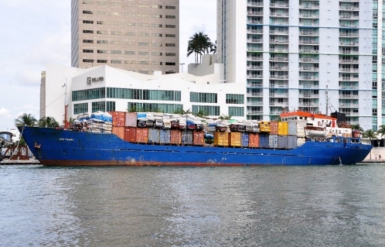 The maritime industry faces several substantive challenges driven by increasingly stricter gaseous air emission legislation and increased efforts by the International Maritime Organization (IMO) to reduce greenhouse gas (GHG) emissions from ships. The adoption of low-flashpoint fuels and gases which can be produced from renewable and sustainable sources, such as methanol, is expected to become one of the means to meet those challenges.
The maritime industry faces several substantive challenges driven by increasingly stricter gaseous air emission legislation and increased efforts by the International Maritime Organization (IMO) to reduce greenhouse gas (GHG) emissions from ships. The adoption of low-flashpoint fuels and gases which can be produced from renewable and sustainable sources, such as methanol, is expected to become one of the means to meet those challenges.
Accordingly, owners, operators, designers and shipyards around the world are considering taking advantage of using methanol as marine fuel. This Advisory has been developed to address the need of the maritime industry to better understand the issues involved with methanol bunkering. It is intended to provide guidance on the technical and operational challenges for both the delivering ship (or land-side sources) and the receiving ship involved in bunkering operations.
Critical design issues, viable solutions, compliance with regulations, safe practices, important areas of operational processes, training and safeguards are addressed in this document. GENERAL Methanol (methyl or wood alcohol) is a clear, odourless chemical compound that has an additional oxygen atom compared to methane, with the chemical composition CH3OH (often abbreviated to MeOH). It is water soluble and biodegradable and has a low flashpoint of approximately 12˚ C and is corrosive to certain materials. Methanol can be produced from renewable sources such as biomass or an electrolysis process.
These are also known as bio-methanol and e-methanol and may be delivered on a commercial scale. Methanol is a liquid at atmospheric pressure, with a boiling point of 65˚ C. The energy density, at 15.7 megajoules per litre (MJ/L), is significantly lower than that of conventional fuel oils and therefore requires approximately 2 to 2.5 times more storage volume for the same energy content. Methanol has cleaner burning properties enabling reduced exhaust emissions such as Sulphur Oxides (SOx) and particulate matter (PM) and emits less nitrogen oxides (NOx) than conventional fuel oils. In open air, methanol has a flammable range of approximately 6-36.5 percent and burns with a flame that is nearly invisible in daylight with no smoke.
Methyl alcohol is classified as toxic by the IMO’s International Code for the Construction and Equipment of Ships Carrying Dangerous Chemicals in Bulk (IBC Code). The United States National Institute for Occupational Safety and Health (NIOSH) Immediately Dangerous to Life or Health Concentrations (IDLH) value is 6,000 parts per million (ppm). The Occupational Safety and Health Administration (OSHA) Permissible Exposure Limit is 200 ppm over an eight hour time-weighted average (TWA).
There are currently no International Organization for Standardization (ISO) standards developed for methanol bunkering . The fuel quality issues of methanol are far less than may be experienced with conventional residual fuel oils or liquefied natural gas (LNG). The ISO/DIS 6583 Specification of methanol as a marine fuel for marine applications is currently indicated as under development stage at the ISO/TC 28/SC 4 Technical Committee.
Until this specification is published, the fuel specification and quality should be subject to the minimum statutory requirements for sulphur content and commercial agreements between supplier and purchaser. Agreements for fuel supply should also take into consideration the International Methanol Producers and Consumers Association (IMPCA) Methanol Reference Specifications and the required specifications of the equipment manufacturers, i.e., the engine and fuel supply system designers.
Download the methanol bunkering technical guidance: ABS-Methanol-bunkering-Tech-and-ops-advisory_2024_04_c


